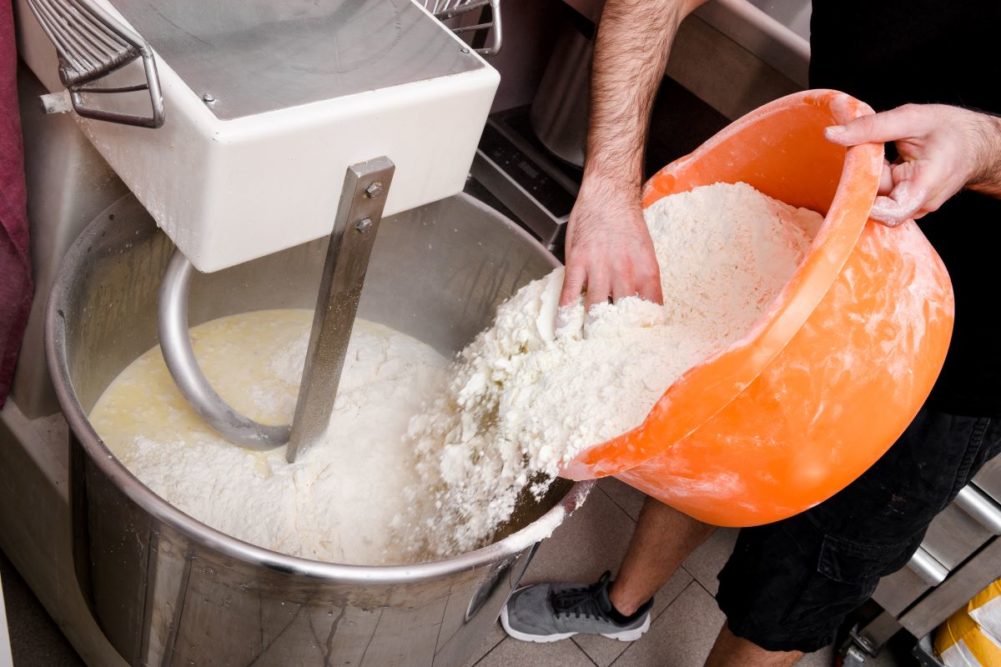 Josh Sosland, editor of Milling & Baking News.
Josh Sosland, editor of Milling & Baking News.Finding ways to address a shortage of skilled labor has been atop the American Bakers Association’s priority list for many years, but the problem only has grown more acute since the COVID -19 pandemic. At the annual meeting in March, the organization’s leadership expressed a commitment to step up its efforts around the challenge.
For Eric Dell, the organization’s new president and chief executive officer, finding solutions to the workforce issue is part of a broader pledge the ABA will redouble its efforts to advocate for the baking community regarding legislative and regulatory decisions that affect the industry. Supply chain, sustainability and general regulatory relief were among topics Mr. Dell addressed, but labor challenges clearly were top of mind among bakers at this year’s annual meeting.
The industry’s sense of urgency likely was heightened by recent revelations that large numbers of migrant children appeared to be illegally working in industrial jobs, including at grain-based foods manufacturing plants. In response, the Department of Labor promised to crack down to “ensure child labor is removed from supply chains.”
One possible path for easing labor tightness was shown to bakers at the meeting in a presentation by Yaron Schwartz, director for the US at the Tent Partnership for Refugees. The organization works with large companies to help them connect with refugees as potential employees.
The refugee population is substantial and almost certainly isn’t fully tapped. Mr. Schwartz said more than 3 million refugees have been legally admitted into the United States since 1980. More recently, 100,000 Ukrainians and 85,000 Afghans escaping violence have come to the United States. Given that more than 25 countries around the world presently are at war (mostly civil wars or enduring terrorist insurgencies), the flow of legal refugees is likely to continue. Because the US government provides refugees with work documents, employers are spared this responsibility. Mr. Schwartz said the refugee population faces structural barriers in efforts to find employment, so a concerted effort by the baking industry to target this population for hiring could bear fruit.
Related efforts in the past by the ABA have encouraged members to target underrepresented or new talent pools such as women, military veterans and millennials. The group’s leadership appeared to commit to taking an even larger step given the realities that the US unemployment rate has hovered between 3.5% and 3.7% for longer than a year and that demographic trends are not favorable.
“We will think big, we will lead, and we will be a part of the solution on major societal issues impacting your businesses,” Mr. Dell said.
His remarks were echoed by Cordia Harrington, the association’s chairman, and CEO of Crown Bakeries, Brentwood, Tenn. She said, “He’s a collaborator. I’m a collaborator. Together, we are thinking big. How can our industry be a leader in making a difference, not only for our industry members but for the greater good of our industry and our country? We will also work together with the broader food and beverage community in DC to partner where possible.”
Ambitious approaches under consideration by the ABA were discussed at the annual meeting, including strategies the group said it was not yet ready to announce publicly. It has become increasingly clear half steps will not be sufficient if labor tightness truly is to be solved.
One evergreen topic eclipsed by the workforce focus was actions the industry could consider to boost consumption of baked foods. The tight labor situation may be masking chronic underlying weakness in the marketplace for flour-based foods. According to the 2022 Food & Health Survey from the International Food Information Council Foundation, Washington, 9% of Americans claim to follow a gluten-free diet, up from 6% in 2019 and equating to about 30 million consumers. The labor shortage is unlikely to last forever, and it is difficult to imagine a prosperous future for the baking industry if negative consumption trends are not arrested.





